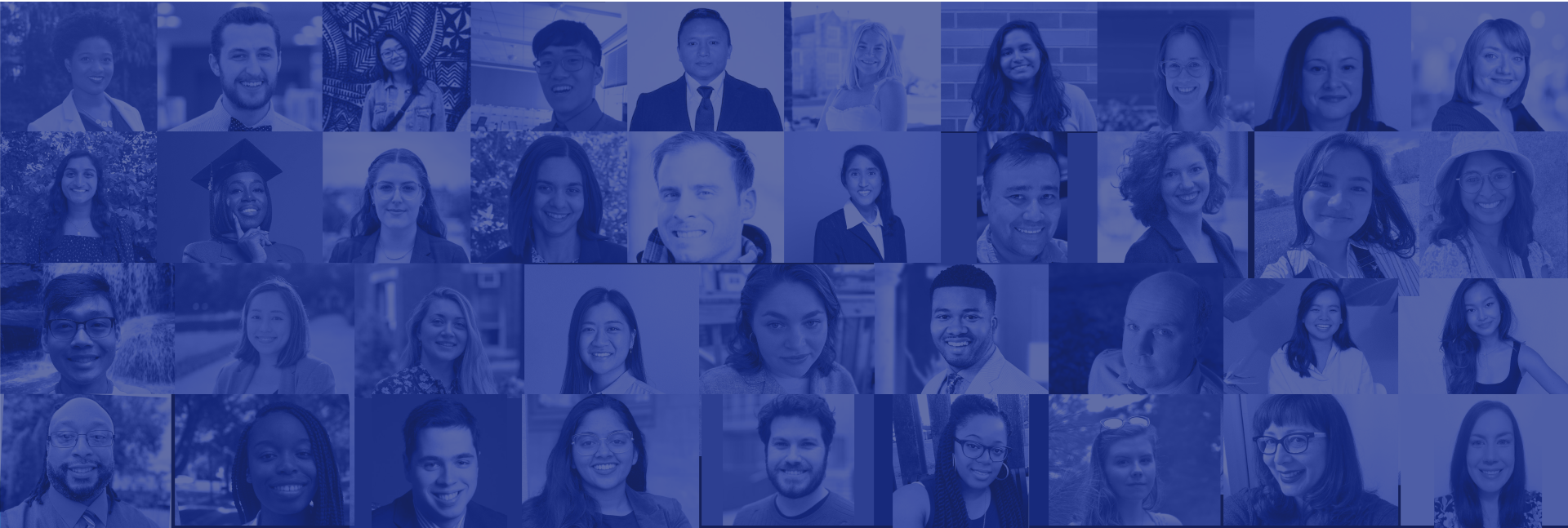The President’s Management Agenda (PMA) defines Government-wide management priorities for all Federal agencies to improve how Government operates and performs, toward the PMA vision of an effective, equitable, and accountable Government that delivers results for all Americans through three main priority areas. Periodically we share stories that highlight real world examples of work underway through one of the three PMA priorities. Here we share about the work done by the newly founded U.S. Digital Corps, at the General Services Administration’s Technology Transformation Services. Learn about their work to improve the Federal hiring process, which supports Priority One of the PMA—strengthening and empowering the Federal workforce.
Last August, the General Services Administration (GSA) launched the United States Digital Corps (USDC), a new program that recruits and hires early-career technologists to work in the Federal Government. A year after their founding, we sat down with the team to learn about the program’s progress and impact on hiring.
Building awareness of Federal opportunities
In recruiting early-career technologists, the USDC team knew that they would be competing in a crowded labor market with private-sector employers. To ensure that the Digital Corps opportunity stood out, they followed several recruiting best practices, including:
- Inclusive program design with career growth opportunities. Technology Transformation Services (TTS) intentionally structured the U.S. Digital Corps fellowship around a cohort-based model knowing how attractive having a community and peer support network is for early-career professionals. USDC features a program-wide recruitment incentive to ensure financial accessibility for candidates from different socioeconomic backgrounds, as well as dedicated mentorship and learning and development opportunities. The program is focused on early-career technologists, and recruits for positions on a career ladder that starts at GS-9 and goes to GS-12.
- Meeting people where they are. USDC conducted proactive outreach to nonprofit organizations; college and university student clubs, faculty, and staff; and other partners in the technology community to expand reach to students through trusted channels where they learn about job opportunities.
- Offering information sessions. The USDC team hosted many virtual information sessions to share more about the program and to help demystify and humanize the work of Government, as well as communicate clearly and transparently about the application and selection process.
Using the above tactics, USDC received over 1,000 applications for the early-career fellowship in just 1 week. Of the 38 Fellows that were eventually selected, 83 percent are first-time Federal employees. These results are notable considering the low percentage of young people in the Federal workforce at large, which is especially the case in the Federal technology workforce.
Using subject matter experts (SMEs) in applicant selection
GSA partnered with the U.S. Digital Service to leverage the Subject Matter Expert Qualification Assessments (SME-QA) process in qualifying and ultimately selecting Digital Corps applicants. The SME-QA process pairs subject matter experts with HR representatives to collaboratively determine the necessary qualifications for open positions and design pass/fail assessments to measure those qualifications, moving hiring away from self-assessment questionnaires used by Federal agencies and towards skills-based assessments. SME-QA is uniquely configured to enhance the quality of job candidates, and ultimately, new hires through better collaboration and engagement between human resources officials and hiring managers. The Digital Corps was the first SME-QA hiring action that focused on early-career professionals—USDC postings were at the GS-9 level, compared to GS-13 to GS-15 for previous SME-QA postings. Five parallel postings were available, one for each USDC skill track: software engineering, data science and analytics, product management, design, and cybersecurity.
SME participation in every stage of the hiring process, from job analysis to resume review and interviews, gave applicants confidence that they were being assessed solely on the skills needed to do the job. Analysis of anonymized applicant data showed that the proportion of women and people of color stayed constant or even rose slightly through the selection process, resulting in a cohort of Fellows that represents the diversity of the United States.
Thirty-eight USDC Fellows are now at 12 Federal agencies working to advance key Administration priorities, including projects to enhance public-facing services, expand voting access in underserved communities, and secure our nation’s cybersecurity. Many Fellows are working on projects that advance the second PMA priority – delivering excellent, equitable, and secure Federal services and customer experience for the American people.
Looking ahead
Now, with one year of learnings and experience under their belt, the USDC team is gearing up to recruit and hire a second, larger cohort of Fellows to start in summer 2023. In its effort to make public service aspirational and accessible for the next generation of civic technologists, USDC has continued outreach to communities traditionally underrepresented in technology and Government, most recently presenting at a national convention of Hispanic and Latino leaders and students in San Juan, Puerto Rico.
Applications are timed to open this fall, the ideal window for recent and soon-to-be graduates entering their last year of studies. Once again anticipating more qualified applicants than they are able to hire, the USDC team has been sharing recruiting best practices with other Federal agencies and is exploring using shared job certificates so other agencies can directly bring on highly-qualified candidates that are not selected by the first hiring agency.
Learn more
To learn more about the program or to get involved, visit the U.S. Digital Corps website or follow USDC on Twitter or LinkedIn.
Subscribe to our newsletter to receive updates in your inbox about the PMA and other performance-related content.




